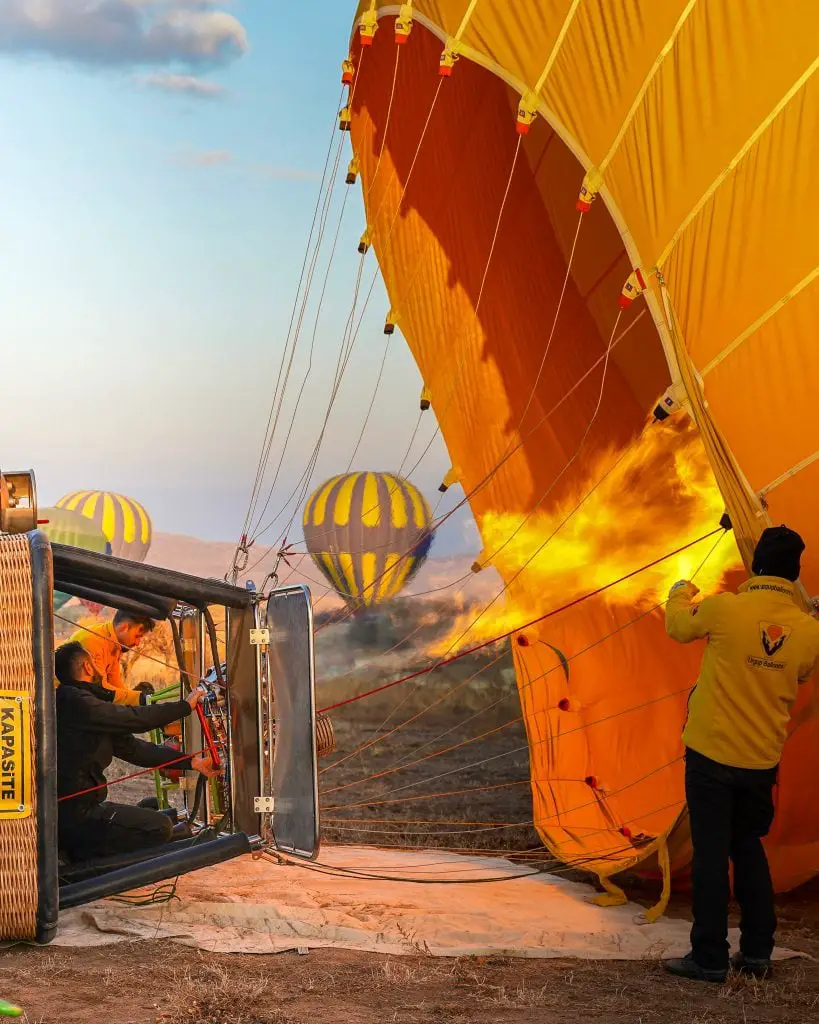How do hot air balloons work? How can it fly? How is that even possible?! These are all questions you might be asking yourself, and we’re here to answer them.
The first hot air balloons were created in 1783 by two brothers named Joseph and Jacques Montgolfier. They discovered that if they filled a bag with hot air, it would rise into the sky.
Since then, hot air balloons have been used for all sorts of purposes. They’ve been used to carry cargo, as a mode of transportation, and even as a way to spy on enemies during war times. As the hot air rises your hot air balloons also rise.
Check out this blog post for more information on how hot air balloons work.
Table of Contents
How Do Hot Air Balloons Work

Hot air balloons work by capturing the heat from the sun and using it as fuel to create buoyant energy. This allows the balloon to float up into the sky like a big bubble!
Without hot air, a bot air balloon cannot fly. Hot air balloons move with an upward force with increased air pressure and when the wind speed generally increases. Hot air ballooning requires a lot of hot air for the balloon to rise.
Important Things to Note
Buoyancy and Lift
A hot air balloon works because of something called buoyancy. Buoyancy is the force that pushes an object up and keeps it afloat. It’s what makes a helium balloon float in the sky, and it’s also what makes hot air balloons fly. The hot air inside the balloon is lighter than the cool air outside of it, so the hot air rises up on the balloon and it causes to floats upwards.
A hot air balloon works by trapping buoyant force inside of itself. As that buoyant energy heats up, it causes the balloon to rise into the sky. The hotter the air inside of the balloon gets, the higher it will float! How amazing is that?
There’s something truly special about hot air balloons – they defy gravity and soar through the sky with nothing more than a bag of heated air.
Rising Balloons
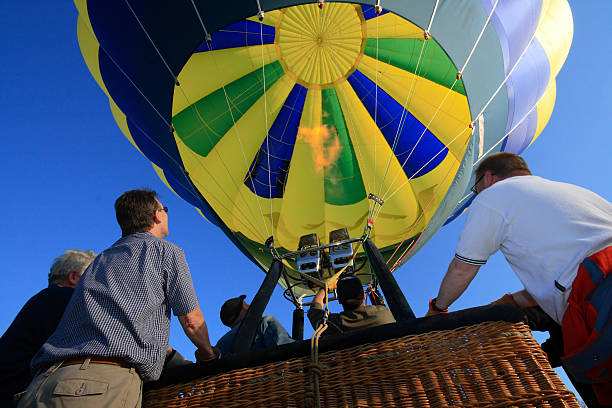
Hot air balloons work by capturing the heat from the sun and using it as fuel to create buoyant energy. This allows the balloon to float upwards into the sky like a big bubble! Hot air balloons rise into the sky because of warm temperatures and wind currents that are moving upwards. This allows them to float over to where ever they need or want to go!
Modern hot air balloons work with liquid propane as burning gas to help in air travel.
The air inside the balloon must be heated in order for it to rise. Hot air balloons use a burner positioned beneath the open balloon cover to do this. The pilot may reheat the air in the balloon by igniting the burner as it cools.
The balloon will rise until the air inside it is cooler than the air outside of it. At that point, the buoyant energy will dissipate and the balloon will start to descend. The inner air temperature must always be warmer than the outer temperature to keep the balloon rising.
Balloon Pilots
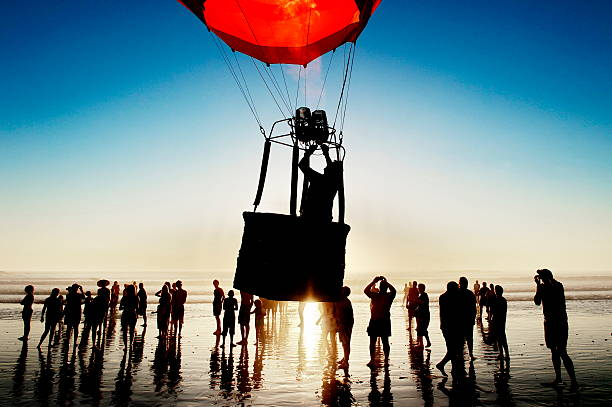
In order to pilot a hot air balloon, you must first obtain a license from the Federal Aviation Administration (FAA). The process can take several months, but most people find it to be well worth the effort. This is an example of how you can use an online class for your FAA certification test.
A hot air balloon pilot must have excellent coordination and hand-eye coordination in order to fly safely! They also need good communication skills since they are required to speak with nearby airports prior to takeoff.
Hot air balloon pilots are in charge of the safety of their passengers and must be able to respond quickly to any emergency situation that may arise. However, hot air balloons can’t just go anywhere they please. They are subject to the same weather conditions as airplanes and other forms of transportation.
Wind and Weather
Checking if the weather is conducive from the weather service is an important step pilot must take to ensure it is safe to take a flight, the most appropriate weather is when the sky is clear and it’s not windy.
Taking flights in inappropriate weather such as in the rain, snow, or in very windy conditions can be dangerous due to strong winds.
Sending a piball (pilot balloon) is another way to check the wind direction and speed at different altitudes, to help make a decision on whether or not to fly. Pilots use altimeter, variometer, and their own flying experience to make a judgment.
The most important thing for a hot air balloon pilot is to be aware of the weather conditions and use that information to make safe decisions about whether or not to fly.
Launching and Landing
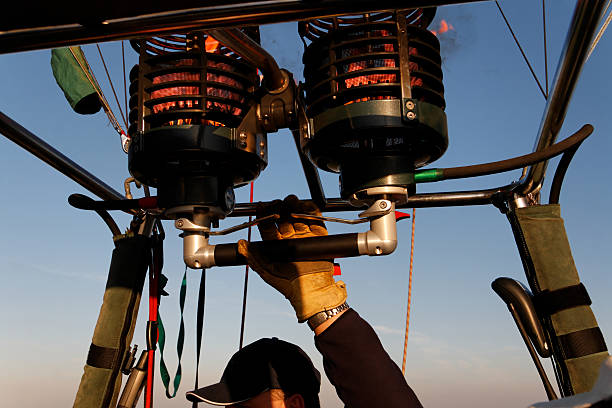
Before launching, everyone involved with the flight must check the equipment and prepare for any emergencies. This includes checking all of their supplies as well as making sure that there is enough fuel to power the burner during takeoff and landing.
Once everything has been checked, pilots decide where they want to launch based on several factors such as wind direction and speed, as well as the location of the airport. They must also take into account how long it will take to get to their desired altitude and make sure that they have enough fuel for the flight.
Once a decision has been made, the pilot notifies air traffic control and begins preparations for takeoff. This includes inflating the balloon and ensuring that everything is secure.
After takeoff, the pilot must monitor the balloon’s altitude and course. They must also be aware of their surroundings and keep an eye out for other aircraft.
Landing a hot air balloon can be tricky – pilots must find a spot that is free of obstacles and has ample room to slow down the balloon. They must also consider the wind direction and speed, as well as the amount of fuel they have left.
Once a landing spot has been chosen, the pilot begins to slowly descend the balloon until it is just a few feet from the ground. They then cut off the burner and allow the balloon to drift to the ground.
Being a hot air balloon pilot takes a lot of skill and experience! These are just some of the things that they must take into account when flying. Pilots must always be aware of the weather conditions and use that information to make safe decisions about whether or not to fly.
Passengers

The typical hot air balloon basket can hold up to four passengers plus the pilot. Most balloons are designed for two people, although some can accommodate up to six. The passenger compartment
Most hot air balloon flights last for about an hour, although longer flights are possible depending on the conditions. It’s also important to remember that hot air balloons do not fly at night, so make sure you check when your flight begins and ends!
How Do Hot Air Balloons Stay Up In The Sky?
The average hot air balloon ride lasts for about an hour. How do they stay up in the sky for so long?
The hot air balloon is constantly rising and falling as it moves through the air. This happens because of something called convection currents. The heat from the sun rises to the top of the balloon, causing it to rise into the sky. As it rises, the cooler air pushes the hot air out of the balloon, causing it to fall back down. This process repeats over and over again, which is what keeps the balloon in the sky!
How Does The Pilot Steer?
The pilot steers a hot air balloon by changing its altitude. If they want to go left, they will raise the right side of the balloon. If they want to go right, they will raise the left side of the balloon.
This causes air currents in different parts of the sky to push on different sides of the basket, causing it to turn and change direction. The pilot must constantly monitor these currents so that they can make adjustments along their journey!
How Do You Control a Hot Air Balloon?
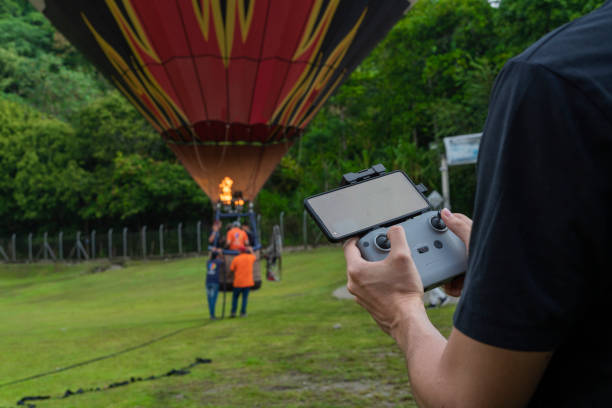
Since hot air balloons lack steering wheels, the direction and speed of the wind at various heights are used by the pilot to guide the balloon. The ascension and descent of hot air balloons are within the control of the pilots, but they are unable to move the balloon in another direction without changing height.
Hot air ballooning is a very interesting activity.
